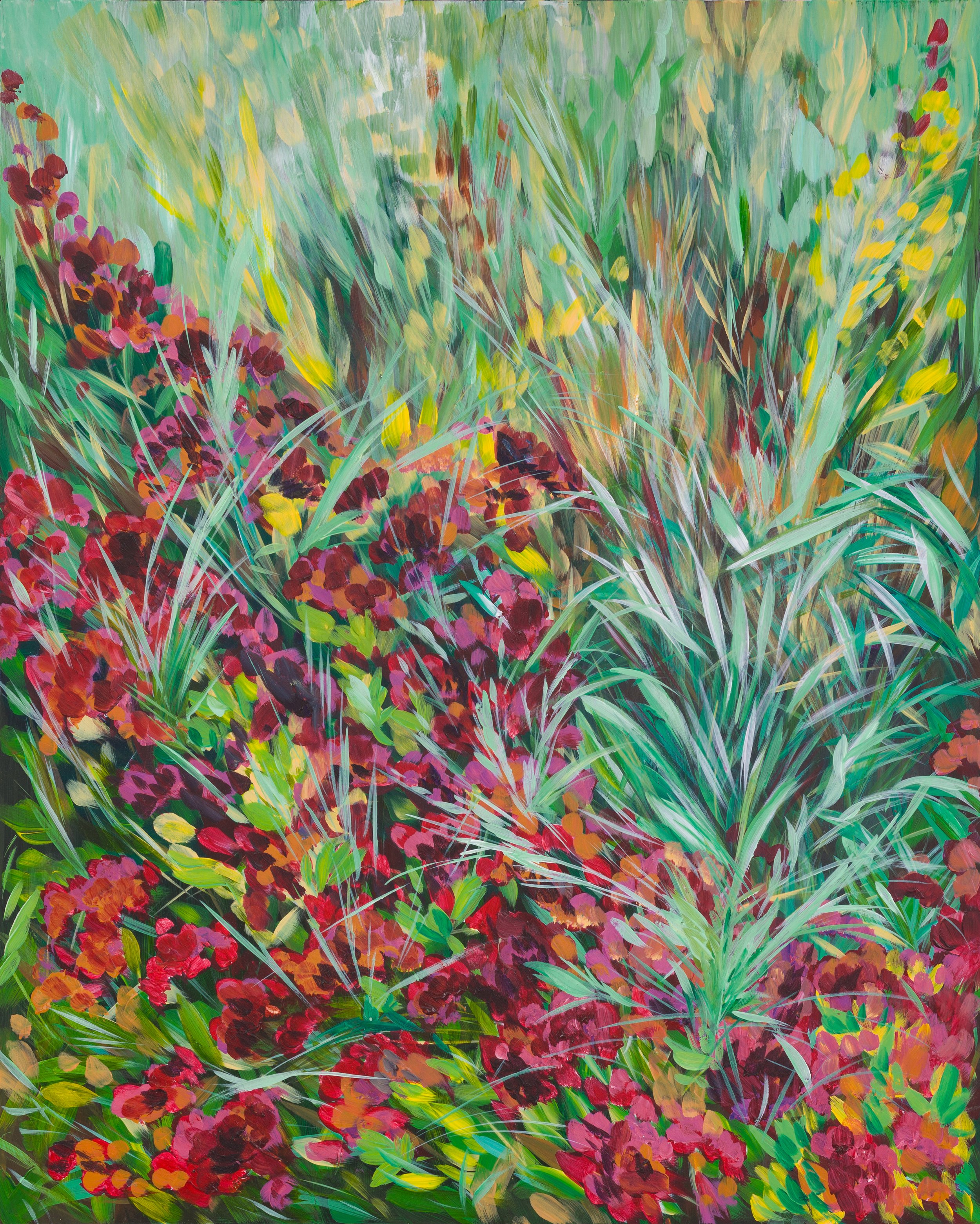Live Forever ii by Daisy McMullan
Live Forever ii by Daisy McMullan
Daisy McMullan
Live Forever ii , 2021
Acrylic on poplar panel, framed
52 x 42 x 4.5 cm
20 1/2 x 16 1/2 x 1 3/4 in.
(DMM018)
Daisy McMullan
Born 1985, UK
Daisy McMullan is an artist making richly layered paintings that document the natural world; inspired by magical realism and the ever-changing soul of the landscape, her paintings use expressive colour and mark-making to create otherworldly interpretations of the everyday. Her shimmering work captures the glimmers of hope and joy to be found in the natural world, should we choose to look closely enough.
Daisy’s paintings feature the verges, lines and paths that mark out ways of navigating the world both physically and emotionally. They feature places she walks regularly; overlooked, common spaces that belong to everyone and no-one. They are small wildernesses, uncultivated and irregular. Daisy uses these to create imaginative compositions that play with sacred geometries of nature, with multiple layers of colour and glazes giving a sense of hidden depth and stories hidden within.
Each painting is a meditation on an interaction with the natural world – a rewilding of the mind, the self, the soul. The Romantic ideals of returning to nature, individual spirituality, and treading ancient paths to commune with the metaphysical are highly influential on the process of making these works. They also reference Dutch Golden Age still life amd forest floor painting, where life, death and spirit are carefully balanced and observed in sharply contrasting tones. The expressive mark making Daisy uses references Abstract Expressionism, particularly the work of Joan Mitchell and Lee Krasner. There is also a particular Englishness about the world depicted in Daisy's paintings that resonate with the work of Albert Durer Lucas or Lucien Freud's approach to paiting plants.
The works are records of nature, preserving the seemingly unimportant for a future time. However, they are as much about the technology and theory of painting, constant and rigorous experiments with colour, opacity, viscosity and temperature. Daisy uses a carefully chosen palette of colours to render plantlife in a uniqie way that gives feeling, texture and movement to her paintings.
Natural forms are built using combinations of free, expressive strokes, textural stipplings and folk art inspired lines forming leaves and petals. The use of tonal layers, similar in the construction of a screenprint, helps to build in movement and the tension of translucent and more opaque forms. A key technique of underpainting, inspired by past masters adds luminous depth. These ideas and techniques are built up gradually, adding colour and light in increments until a beautiful image finally emerges from the dark.
Daisy trained as a fine artist at Wimbledon School of Art and Camberwell College of Arts, receiving a BA(hons) in Painting in 2007. She later studied for a Masters in Curating at Chelsea College of Art and Design, and was awarded a two-year Research Fellowship in 2012 at Chelsea Space, a public gallery at the College. Daisy works now as an artist, educator and curator.
Daisy’s notable solo exhibitions include: Observed Imagined Remembered, Cass Art Kingston (2022), and Rewildings, Dorking Museum (2022). She has exhibited in group shows including HERO, Great West Gallery (2024), Abstract Worlds, Croydon Art Space (2023), Winter Group Show, Folkestone Art Gallery (2023), and the Young Masters Invitational Exhibition, The Exhibitionist Hotel (2023/24). Daisy made her debut at the British Art Fair at the Saatchi Gallery with Cynthia Corbett Gallery in 2023, and will return with a new body of work on linen in 2024. She was also shortlisted for the SAA Artist of the Year People’s Choice Award in 2022.
Daisy works from her studio in Brixton, south London, creating paintings and exhibitions that reflect on nature and place. The works become emotional documents, depicting unseen feeling as much as they record the world that we can see.

